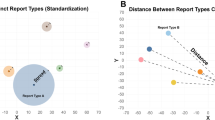Abstract
Today, in order to provide high-quality medical services and to extend resources and reduce costs, many large hospitals have adopted clinical guidelines as a structured way to manage medical activities. However, customization of clinical guidelines in order to treat a large number of patients is a major challenge. In this paper, we present a physician order category-based clinical guideline comparison system. The system uses a preprocessor software to convert the clinical guidelines from a Microsoft Word document into XML format, and it can also compare clinical guidelines over the conceptual view such as the physician order category. The system has already been used to compare the HCC surgical clinical guidelines of Taiwan and Mongolia—resulting in some differences being found, for which possible causes were discussed. Therefore, it can be seen that our research provides a practical and convenient way in which to compare clinical guidelines based on physician order category—thereby saving time and enabling physicians to quickly resolve discrepancies and make necessary adjustments to clinical guidelines.








Similar content being viewed by others
References
Ohno-Machado, L., Gennari, J. H., Murphy, S. N. et al. The guideline interchange format: a model for representing guidelines. J Am Med Inform Assoc. 5(4):357–372, 1998.
Shahar, Y., Miksch, S., and Johnson, P. The Asgaard project: A task-specific framework for the application and critiquing of time-oriented clinical guidelines. Artif Intell Med. 14(1–2):29–51, 1998.
Health Level 7. Arden Syntax for medical logic systems standard version 2.6. Ann Arbor, MI: Health Level 7; 2007.
Musen, M. A., Tu, S. W., Das, A. K., and Shahar, Y. EON: A component-based approach to automation of protocol-directed therapy. J Am Med Inform Assoc. 3(6):367–88, 1996.
Hu, Z., Li, J. S., Zhou, T. S., Yu, H. Y., Suzuki, M., and Araki, K. Ontology-based clinical pathways with semantic rules. J. Med. Syst. March 2011.
Hsieh, S. H., Hou, I. C., Cheng, P. H., Tang, C. T., Shen, P. C., Hsu, K. P., Hsieh, S. L., and Lai, F., Design and implementation of web-based mobile electronic medication administration record. J Med Syst 34(5):947–958, 2010.
Sandagdorj, T., Sanjaajamts, E., Tudev, U., Oyunchimeg, D., Ochir, C., and Roder, D., Cancer incidence and mortality in Mongolia - National Registry Data. Asian Pac J Cancer Prev. 11(6):1509–14, 2010.
Alcorn, T., Mongolia’s struggle with liver cancer. The Lancet. 377(9772):1139–1140, 2011.
Laleci, G. B. and Dogac, A. A semantically enriched clinical guideline model enabling deployment in heterogeneous healthcare environments. Trans. Inf. Technol. Biomed. 13(2):263–273, 2009.
Fuchsberger, C. and Miksch, S. Asbru’s execution engine: Utilizing guidelines for artificial ventilation of newborn infants. Technical report, Vienna University of Technology, Institute of Software Technology and Interactive Systems, 2002.
Peleg, M., Ogunyemi, O., Tu, S., Boxwala, A. A., and Zeng, Q. Using features of Arden syntax with object-oriented medical data models for guideline modeling. Proc AMIA Annu. Symp. 523–527, 2001.
Pryor, T. A. and Hripcsak, G. The Arden syntax for medical logic modules. J. Clin. Monit. Comput. 4:215–224, 1993.
Tu, S. W. and Musen, M. A. Modeling data and knowledge in the EON guideline architecture. Proc. MedInfo 2001, London, U.K., pp. 280–284, 2001.
Okada, O., Ohboshi, N., and Yoshihara, H. Clinical path modeling in XML for a web-based benchmark test system for medication. J. Med. Syst. 29(5):539–553, 2005.
Latoszek-Berendsen A, Tange H, van den Herik HJ, Hasman A. From clinical practice guidelines to computer-interpretable guidelines. A literature overview. Methods Inf Med. 49(6):550–570, 2010.
Johnson KB, Cowan J. Clictate: a computer-based documentation tool for guideline-based care. J Med Syst. 26(1):47–60, 2002.
Ekberg J, Ericson L, Timpka T, Eriksson H, Nordfeldt S, Hanberger L, Ludvigsson J. Web 2.0 systems supporting childhood chronic disease management: design guidelines based on information behaviour and social learning theories. J Med Syst. 34(2):107–117, 2010.
Author information
Authors and Affiliations
Corresponding author
Rights and permissions
About this article
Cite this article
Yu, HJ., Shen, CP., Dorjgochoo, S. et al. A Physician Order Category-Based Clinical Guideline Comparison System. J Med Syst 36, 3741–3753 (2012). https://doi.org/10.1007/s10916-012-9847-x
Received:
Accepted:
Published:
Issue Date:
DOI: https://doi.org/10.1007/s10916-012-9847-x




